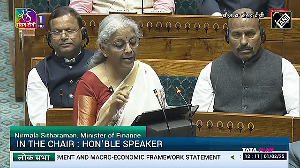I should start with an honest acknowledgment of my own ignorance. Posted to San Francisco from Delhi, I had wondered as to why the Indian government, soon after our Independence had set up an office in this city to cover the western part of the United States. After all, in the fifties there was no Silicon Valley, no technology tie ups, no Indian whiz kids buzzing around, all of which was to come only in the eighties. Why San Francisco then and not Los Angeles, a bigger city with a larger Indian community?
In response to my curiosity and queries, I had been told that in the minds of our leaders of yesteryears, the western part of the US had readily evoked images of San Francisco and the Gadar movement which had its origins there. Having arrived in San Francisco, the next step for me was to explore this historical connection and to look at the photos and the archival material, preserved in the Gadar memorial, a monument to the movement. I believe what I learnt is worth sharing, especially in this sixtieth anniversary year of the Independence.
We cast our eyes back to the first decade of the last century, say the year 1908. This was a time when Indians were very much a part of the British army. Some of them, as a token of appreciation to their loyal service, were sent on a visit to England and then on to Canada, a part of the British Empire. A few, mainly from Punjab, found their way to California from Vancouver in Canada. It would appear that they were inspired by the American ideals of freedom and openness as also the recognition for hard work and entrepreneurship. Besides land was plentiful, and then as it is to this day, those from Punjabi peasant stock were excited with the prospects of farming.
Indians were not readily accepted, could not own land, but nevertheless the first migration to North America, in terms of a few thousands Sikh farmers occurred at that period. After a few years, there was a stirring in the mind: 'If Americans are so free, why are we not? Why are we lorded over by the British?'
Every such inchoate aspiration needs a catalyst to take shape. The figure of Lala Hardayal appears in the narratives of the Gadar movement as the person who organised the early rebels. Born in 1884, Hardayal had studied at St Stephens' College in Delhi and later at Oxford. By 1912, he was a professor at Stanford University, having spent some time at Berkeley as well. Reading about him, after all these years, one cannot but be struck by his academic credentials: St Stephens, Oxford, Berkeley and Stanford -- all stellar names for a sound career, even today. Names that one flaunts for a plum position in the establishment. How much more in British India, then?
But Hardayal's dreams and desires were different: 'Our object is not to reform the government, but to reform it away, leaving, if necessary, only nominal traces of its existence,' he wrote in his letters.
How do we know all this? We get a peep into the mind and methods of Hardayal through a curious source: a police diary written by the British case officers Slattery and Isemongers, tracing the evolution and eventual destruction of 'the Gadar conspiracy,' as the case came to be known.
First printed by the Punjab police in 1917, it was fortunately reprinted last year with a useful introduction by Dr Ved Prakash Vatuk. Being meticulous in their CID work, the diary gives us the life and work of Hardayal, the 'anarchist and trouble maker' as seen by the British. A quotation from the diary will give a flavour of the British view about him:
'Such agitations and conspiracies as have come to notice hitherto among Indians have been furtive and insidious, seeking to undermine gradually the loyalty among people. Hardayal, even in his younger days, had set himself to bring an early revolution in India. His plan -- as shown by his career in the United States -- was to force the pace from the start. He told his hearers and readers that an armed rebellion was necessary; that it was coming soon.'
By 1913, some of the individuals suffused with the ideas of independence and freedom had come together. They met at a place which they named Yugantar Ashram. Inspired by the ideals of the first war of Indian independence of 1857, they started publishing a magazine under the banner of Gadar -- rebellion. This was a highly idealistic and motivated group; among the important personalities were names such as Baba Sohan Singh Bhakna, Kartar Singh Saraba, Rama Chandra, Vishnu Govind Pingle.
A look at the names and photos still seen at the Gadar memorial today reveal that this was a group transcending class, caste and religious divides.
The 'seditious' call of the Gadarites was problematic for the British but just as the movement was gathering some momentum, the First World War broke out causing a change in the course of events. The Gadar members thought that the moment was ripe to return from West to India to fight the British, and they were encouraged in this by the Germans.
However, the climate in India was not conducive to rebellion or anarchistic attitudes and the national leadership of the time was inclined to collaborate with the Raj. Besides, the US, a close ally of England started rounding up the rebels and back in India they found that the police intelligence was able to thwart their plans.
A combination of factors thus led to the dissipation and collapse of the movement by 1917 with the key figures arrested or hung or 'ceasing to be a menace' as the police diary describes it.
India's course for Independence was to take a different direction under the leadership of Mahatma Gandhi in later years. Sure, later day shaheeds like Bhagat Singh were inspired by the Gadar story, but they themselves represented one tangential trajectory of the freedom struggle.
Inevitably, then, the question after all these years: What impact did this movement have on India's struggle for Independence? I am not a professional historian and cannot make a considered assessment. As even a casual reading of Indian history tells us there are so many interpretations of 1857 from 'mutiny' to 'first war of independence' and later, so many twists and turns even under Gandhi's leadership that I can only believe in the 'happenstance' school of history: One thing happens after another and let us leave it to the academics to find patterns.
But from a purely local and personal point of view, not that it is important, if the association with the Gadar movement resulted in the Indian government locating the consulate in San Francisco rather than elsewhere, it has certainly touched our lives in indirect and unintended ways.
Year after year in San Francisco, as we celebrate August 15 and raise the Indian flag, we remember the hopes, the idealism and the sacrifices of a distant past on these distant shores and render our Lal Salaam to the photos of the heroes on the walls of the austere premises of the historical Gadar memorial.
B S Prakash is India's consul general in San Francisco and can be reached at cg@cgisf.org






 © 2025
© 2025